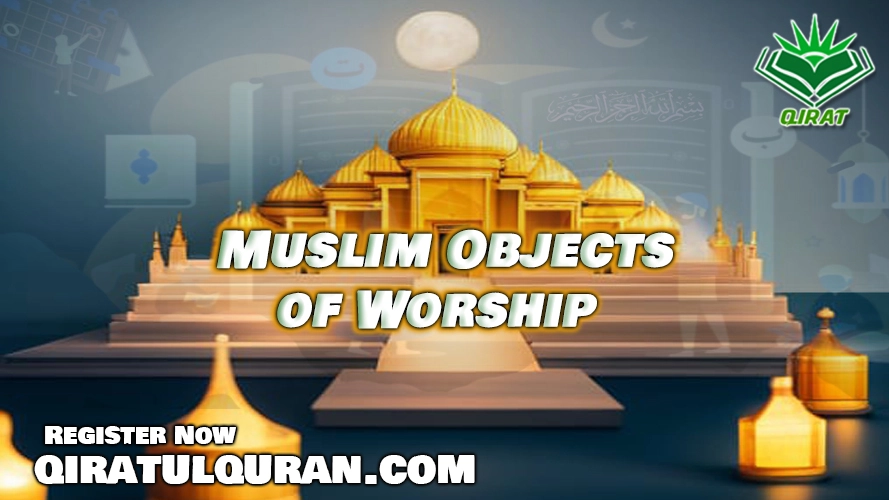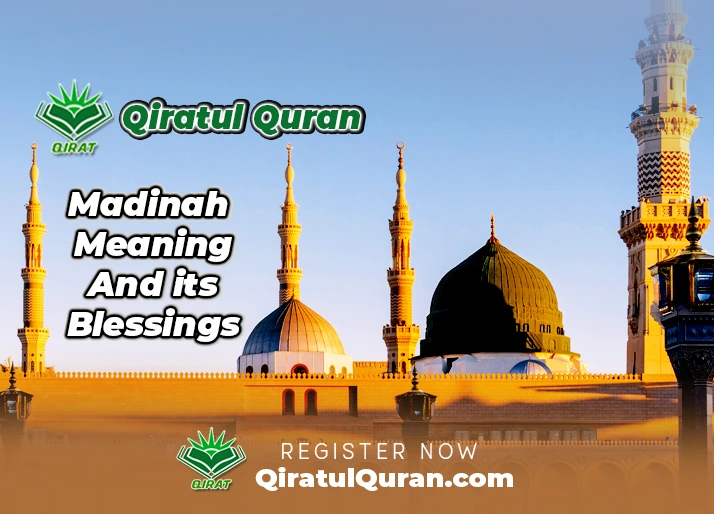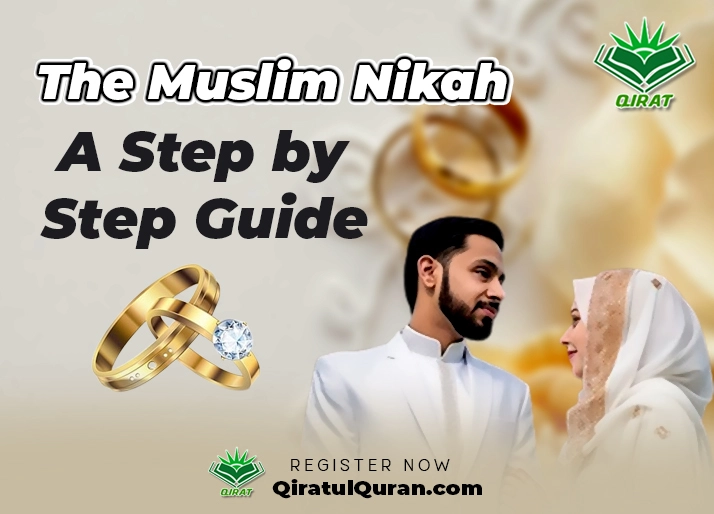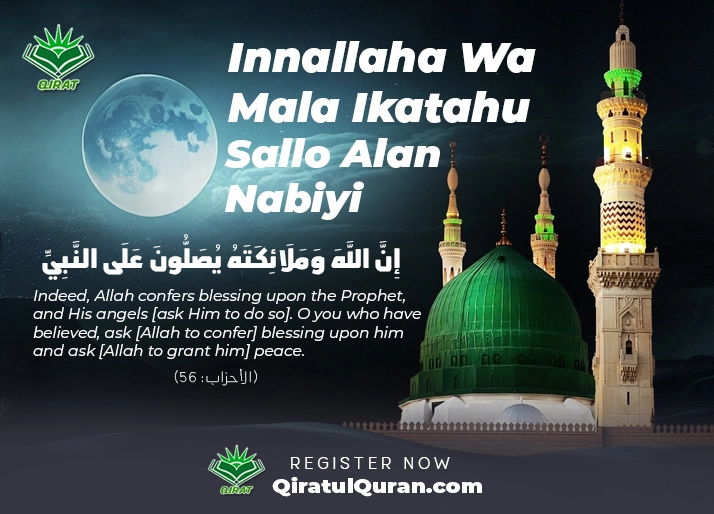Muslim Objects of Worship: Islam has a few key objects that are used in worship and religious rituals. These objects hold spiritual significance for Muslims and are treated with the utmost respect. Qiratul Quran will tell you some of the most important Muslim objects of worship:

The Quran
The Quran is the holy book of Islam and is considered the word of God as revealed to the Prophet Muhammad. It contains the teachings and commandments that Muslims are meant to live by. The physical Quran is treated with reverence – it is wrapped in a clean cloth and placed on a high shelf or table when not in use. Many Muslims will perform ablution (ritual cleansing) before handling the Quran. It is considered disrespectful to place any other objects or books on top of the Quran.
Prayer Beads
Prayer beads, known as misbaha or tasbih, are used by Muslims to keep count of recitations during prayer and dhikr (remembrance of God). The beads are held in the hand and each bead is touched as a prayer is recited. There are usually 99 beads on the misbaha to represent the 99 names of Allah. Some misbaha contains only 33 beads for counting shorter prayers. Using the beads helps worshippers focus and achieve the correct number of recitations.
Prayer Rugs
Prayer rugs are used by Muslims during the five daily prayers as a clean surface for prostration. Traditional prayer rugs contain a niche at one end that represents the qibla, or direction facing the Ka’ba in Mecca. This allows worshippers to correctly orient themselves during prayer. Many Muslims will carry a personal prayer rug when traveling. Prayer rugs are kept clean and not placed on the ground.
Kiswa
The kiswa is the embroidered black cloth that covers the Ka’ba in Mecca. It is replaced annually in a special ceremony before the Hajj pilgrimage. The old kiswa is cut into pieces and given as gifts to important pilgrims and government officials. Possession of a fragment of the kiswa is considered a great blessing. The intricate gold embroidery and verses from the Quran make the kiswa a unique Islamic relic.
Prayer Clothing
Some Muslim women wear special loose clothing such as the abaya, jilbab, or niqab during prayer and religious ceremonies. Covering the shape of the body is seen as modest. For men, loose pants or robes that cover from waist to ankle are recommended during prayer, as are head coverings. However, wearing special clothing is not required and regular modest clothing is acceptable.
Incense (Bakhoor)
Incense burners are used to fill mosques and homes with the fragrant smoke of Bakhoor incense. The natural perfumes without alcohol are burned over charcoal to purify the air before prayer. Popular fragrances include rose, musk, amber, and oud. Burning incense is sunnah – a traditional practice of the Prophet Muhammad. The smoke is thought to spiritually cleanse an area and remind worshippers of the presence of the divine.
Prayer Mats (Sajjadah)
Prayer mats are used by worshippers during Islamic prayer to provide a clean surface when prostrating and sitting. Traditional mats contain intricate geometric and floral embroidery. A section may be left plain to represent the place where the forehead touches during sujud (prostration). Quality materials like thick cotton and leather prevent the mat from folding during use. A personal prayer mat provides comfort and familiarity when praying in public spaces.
Calligraphy
Islamic calligraphy frequently depicts verses from the Quran in beautiful Arabic script. Calligraphy decorates mosques, mausoleums, artworks, and the walls of Muslim homes. Common scripts include Thuluth, Naskh, and Kufic. Seeing sacred scripture written in an aesthetically pleasing manner is uplifting for worshippers. Framing calligraphy of the names Allah and Muhammad displays devotion. Learning calligraphy is encouraged as a pious act in Islam.
Mosques
Mosques are places of communal worship and prayer. The large prayer hall faces towards the qibla in Mecca. Features like minarets, domes, and arches are designed to glorify God. Mosques often contain shelves for storing copies of the Quran, ablution areas for ritual washing before prayer, and shoe racks. Bigger mosques may have separate prayer spaces for men and women. Mosques provide an environment focused entirely on the worship of God.
Islamic Architecture
Unique Islamic architecture like mosques, mausoleums, and forts represent cultural heritage and achievement. Buildings utilize geometric shapes, courtyards, arches, tiles, and calligraphy based on Islamic principles of purity and symmetry. Familiar architecture in one’s hometown can evoke sentiments of community and remind residents of Islamic ideals of harmony between nature, science, and art. Beautiful architecture illuminates man’s servitude to the divine creator.
What is the Most Important Act of Worship in Islam?
In Islam, the most important act of worship is the shahada or declaration of faith: “There is no god but Allah, and Muhammad is his messenger.”
This simple yet profound statement expresses belief in the oneness of God (tawhid) and acceptance of Muhammad as God’s prophet. It is one of the Five Pillars of Islam that forms the basis of Muslim life.
Reciting the shahada with sincerity marks formal entry into the Muslim community. It is also recited routinely in prayer and other contexts. The shahada reminds believers to focus on God above all. It encapsulates Islamic beliefs and provides a worldview grounded in God’s unity.
After the shahada, the next most important acts of worship are the remaining Four Pillars of Islam:
Salat (daily prayer)
Performing the ritual prayers reinforces belief and provides opportunities to thank God.
Zakat (charity)
Giving zakat purifies one’s wealth and helps the needy.
Sawm (fasting during Ramadan)
Fasting develops self-control, compassion, and sincerity.
Hajj (pilgrimage to Mecca)
The hajj gathering promotes human equality before God.
Additionally, acts like reciting the Quran, dhikr (remembrance of God), dua (supplication), and da’wah (teaching others about Islam) are vital for strengthening and sharing faith.
While these formal acts of worship hold great significance, Islam also emphasizes intention and righteous deeds. Doing one’s daily work with the aim of pleasing God and benefiting humanity is also valued in Islam.
Islam Through Objects
Material objects have played an important role in the development and expression of Islam throughout history. Here are some of the ways objects have contributed to the Islamic faith and culture:
Quran manuscripts – Handwritten copies decorated with beautiful calligraphy and illustrations honor the word of God (Allah). Qurans were among the most treasured possessions of Muslim societies.
Mosques – Architectural elements like minarets, domes, arches, and geometric tilework embody Islamic values. Mosques connect believers across time and space.
Prayer beads – Counting beads are used to recite dhikr and keep track of prayers. They anchor spiritual life.
Ceramics – Elaborate pottery and tiles with complex geometric designs adorn mosques and palaces, representing temporal beauty that reflects divinity.
Coins – Inscriptions of Islamic phrases and rulers’ names made currency a symbol of political and religious authority.
Seals – Engraved stones and rings used to stamp documents spread Islamic visual vocabulary.
Calligraphy – Arabic script of Quranic verses graced objects from books to swords to promote faith.
Textiles – Luxury fabrics like silk demonstrated material success, while embroidered kiswas draped the Kaaba.
Relics – Holy relics linked to Muhammad S.A.W and other venerated figures, like hairs from Muhammad’s S.A.W beard, generated awe.
Tombs – Elaborately decorated tombs and mausoleums housed the remains of saints and sultans.
Incense burners – Sweet smoke from aloeswood and other aromatics-scented rituals.
Diverse objects, from precious metals to painted manuscripts, defined Islamic identity and gave tangible form to its theology. Beauty in objects aroused spiritual emotions. By elevating aspects like text, geometry, and calligraphy, Islamic material culture facilitated a connection with the divine.
Summary About Muslim Objects of Worship
In summary, the shahada is the foundation and cornerstone of Muslim Objects of Worship. Uttering it with conviction and living according to its message is the most important act of worship for Muslims.





